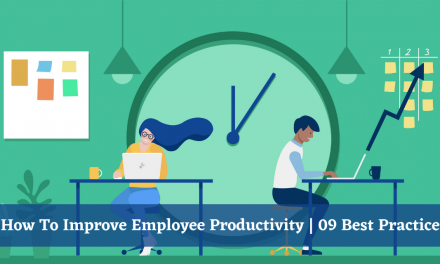In the relentless pursuit of organizational success, there’s a critical factor that often gets overlooked– the wellbeing of your employees. Despite the increasing awareness of its importance, many companies find themselves grappling with the challenges of not just creating, but successfully implementing an employee wellbeing strategy that truly makes a difference.
Navigating this complex terrain involves addressing the pain points that organizations often encounter on the path to employee wellbeing. From skeptical leadership to navigating budget constraints and overcoming resistance to change, the journey can be arduous.
In this blog, we delve deep into the heart of these challenges, aiming to shed light on how to not only recognize but conquer the obstacles that hinder the successful referral and implementation of a robust Employee well-being strategy.
Listen To The Blog!!
Why Create An Employee Wellbeing Strategy?
Here are some key reasons why organizations invest in and develop employee wellbeing strategies:
Improved Productivity:
Employees who are physically and mentally healthy are likely to be more productive. A well-being strategy can address factors such as stress, burnout, and work-life balance, leading to increased focus and efficiency in the workplace.
Enhanced Employee Engagement:
When employees feel supported in their well-being, they are more likely to be engaged with their work. Engagement is crucial for job satisfaction, retention, and overall organizational success.
Reduced Absenteeism:
A focus on well-being can help reduce absenteeism in the workplace due to physical or mental health issues. Promoting a healthy work culture and investing in preventative care can reduce the number of sick days.
Talent Attraction and Retention:
In a competitive job market, organizations that prioritize employee well-being are more attractive to potential talent. Additionally, employees are more likely to stay with an organization that cares about their health and overall well-being.
Positive Organizational Culture:
An employee wellbeing strategy contributes to the development of a positive organizational culture. When employees feel supported and valued, it fosters a sense of belonging and teamwork, which can positively impact the workplace atmosphere.
Cost Savings:
Investing in employee well-being can lead to long-term cost savings for an organization. By preventing health issues and promoting a healthy lifestyle, companies may reduce healthcare costs and expenses related to turnover and recruitment.
Legal and Ethical Responsibilities:
Organizations have legal and ethical responsibilities to ensure the health and safety of their employees. A well-being strategy demonstrates a commitment to fulfilling these obligations, fostering trust and compliance with regulations.
Adaptation to Changing Work Environments:
In today’s dynamic work landscape, employee wellbeing strategies help organizations adapt to changes such as remote work, flexible schedules, and new technologies. Addressing the well-being of employees in different work settings is crucial for sustained success.
Employee Satisfaction and Quality of Life:
A focus on well-being contributes to higher levels of employee satisfaction and an improved quality of life. Employees who feel their well-being is a priority are more likely to enjoy their work and experience a better work-life balance.
Social Responsibility:
Demonstrating a commitment to employee well-being aligns with social responsibility values. This not only enhances the organization’s reputation but also contributes positively to the community and society at large.
In summary, creating an employee wellbeing strategy is not just a humane consideration; it is a strategic business decision that can positively impact various aspects of organizational performance, from productivity and engagement to talent attraction and retention.
What Should An Effective Wellbeing Strategy For Employees Include?
Crafting an effective employee wellbeing strategy requires a holistic approach that addresses various aspects of an individual’s life. An all-encompassing strategy should incorporate the following elements to ensure the overall wellbeing of employees:
1. Physical Wellbeing
Promoting physical health is fundamental to any wellness strategy. Incorporate initiatives such as:
Fitness Programs: Encourage regular physical activity through fitness programs, gym access, or virtual workout sessions.
Ergonomic Workspaces: Create comfortable and ergonomic workstations to minimize physical strain and promote better posture.
Wellness Initiatives: Implement wellness programs that focus on nutrition, hydration, and overall physical health.
2. Mental Wellbeing
Prioritizing mental health is crucial for a well-rounded employee well-being strategy. Consider the following:
Mental Health Support Systems: Provide access to counseling services, therapy, or mental health hotlines for employees dealing with stress or mental health issues.
Stress Management Programs: Conduct workshops or training sessions on stress management techniques, mindfulness, and resilience building.
Flexible Work Arrangements: A good employee wellbeing strategy allows flexibility in work schedules to accommodate personal commitments and reduce stress.
3. Financial Wellbeing
Supporting employees in their financial endeavors contributes significantly to overall wellbeing. Include the following components:
Financial Wellness Programs: Offer workshops or resources on financial planning, budgeting, and investment.
Competitive Compensation: Ensure that employees receive fair and competitive compensation, addressing their financial stability.
Employee Assistance Programs (EAPs): Provide confidential counseling services for employees facing financial challenges.
4. Job Security
Fostering a sense of job security contributes to a positive work environment. Consider these measures:
Transparent Communication: Communicate openly about the organization’s stability, plans, and growth opportunities.
Career Growth Paths: Offer clear career development paths, showing employees potential avenues for growth within the organization.
Skill Development: Invest in continuous learning opportunities to enhance employees’ skills and make them more adaptable.
5. Social Wellbeing
Building social connections within the workplace is crucial for overall employee wellbeing strategy. Implement the following:
Team-building Activities: Organize regular team-building events or activities to strengthen relationships among colleagues.
Mentorship Programs: Establish mentorship initiatives that promote professional and personal development.
Positive Workplace Culture: Foster a positive and inclusive workplace culture where employees feel valued and supported.
6. Digital Wellbeing
Work-Life Balance: Encourage a healthy work-life balance by setting clear expectations for work hours and breaks.
Digital Detox Programs: Promote periodic breaks from technology to prevent burnout and eyestrain.
Training on Digital Etiquette: Educate employees on maintaining professionalism and boundaries in digital communication.
7. Career Development
Supporting employees in their career journey enhances their overall wellbeing. Consider the following employee wellbeing strategies:
Continuous Learning Opportunities: Provide access to workshops, courses, and resources for ongoing skill development.
Performance Feedback: Offer regular constructive feedback to help employees understand their strengths and areas for improvement.
Career Path Planning: Facilitate discussions on career goals and provide guidance on advancement within the organization.
A well-thought-out employee wellbeing strategy incorporates all of these elements to create a holistic approach that responds to the needs of a diverse workforce. By tailoring employee wellbeing efforts to the specific needs of your organisation its people can benefit from a more effective and sustainable wellbeing approach.
In the age of technology, employee management tools have become invaluable in executing a successful employee wellbeing strategy. These tools, like performance monitoring software, play a crucial role in understanding employee engagement and wellbeing.
One such tool is EmpMonitor, which allows organizations to track employee wellbeing and performance effectively. This software provides valuable insights into employee behaviors and preferences, enabling organizations to tailor their wellbeing initiatives for maximum impact.
EmpMonitor| Employee Performance Monitoring Software
EmpMonitor is a cloud-based workforce productivity and engagement software that provides real-time employee tracking insights into the team’s work record. This assists in developing an appreciation of the advantages and disadvantages of the team’s work and enhances organizational efficiency.
EmpMonitor does indeed provide a strong suite of tools for businesses to track and engage with their employees. Let’s break down some of the key features:
Attendance Tracking:
This attendance tracking software tracks employee attendance records, including clock-in and clock-out times, absences, and late arrivals. This feature helps managers ensure that employees adhere to their schedules and maintain consistent attendance and unwanted overwork and of the employee.
User Activity Monitoring:
Real-time monitoring of employee activities and context-rich reporting provide valuable insights into team performance. This feature can help businesses identify productive patterns, areas for improvement, and potential issues.
Time Tracking:
EmpMonitor allows employees to log their work hours, breaks, and activities throughout the day. It provides a comprehensive view of how time is allocated across different projects and tasks, helping employees prioritize and manage their workload effectively.
Threat Detection:
The ability to identify threatening activities, whether due to negligence or malicious intent, is essential for maintaining a secure work environment. It implements encryption, access controls, and audit trails to safeguard employee information.
Overall, EmpMonitor seems to address various aspects of workforce management, from attendance and time tracking to security and privacy compliance. Businesses looking to enhance productivity and engagement while maintaining a secure and compliant environment may find this platform beneficial.
Read More:
’07 Positive Approaches For Employee Wellbeing And Engagement This Christmas
How To Boost Your Employee Wellbeing Strategy?
How To Create Positive Work Environment In 09 Steps
How to Plan & Execute an Employee Wellbeing Strategy?
Crafting and implementing an effective employee health and wellbeing strategy involves a systematic approach:
Assessment: Understand the unique needs of your workforce through surveys, feedback, and data analysis.
Customization: Tailor your strategy to address specific areas of concern identified during the assessment.
Implementation: Introduce employee wellbeing initiatives gradually, ensuring proper communication and employee participation.
Monitoring: Use tools like EmpMonitor a performance monitoring software to track the effectiveness of your strategy and make adjustments as needed.
Evaluation: Regularly assess the impact of your wellbeing initiatives on employee satisfaction, engagement, and overall performance.
All in all, an employee wellbeing strategy isn’t just a human right; it’s a strategic business choice that can make a positive impact on a wide range of organizational performance metrics, including productivity and engagement, as well as talent acquisition and retention.
Conclusion
This performance monitoring software not only aids in tracking and understanding employee engagement and wellbeing but also empowers organizations to tailor their employee wellbeing strategies with precision.
By harnessing the insights provided by EmpMonitor, organizations can make informed decisions, identify areas for improvement, and ensure that their wellbeing initiatives resonate with the unique needs of their workforce.
This tool’s high level of detail allows for a more granular approach, making sure that your interventions are not just good intentions, but also very effective.












